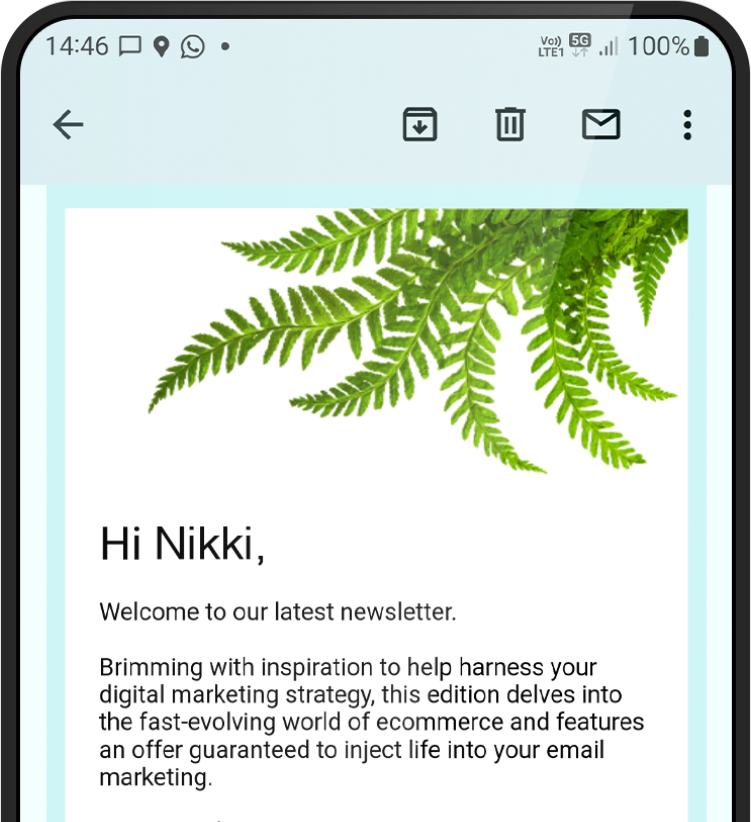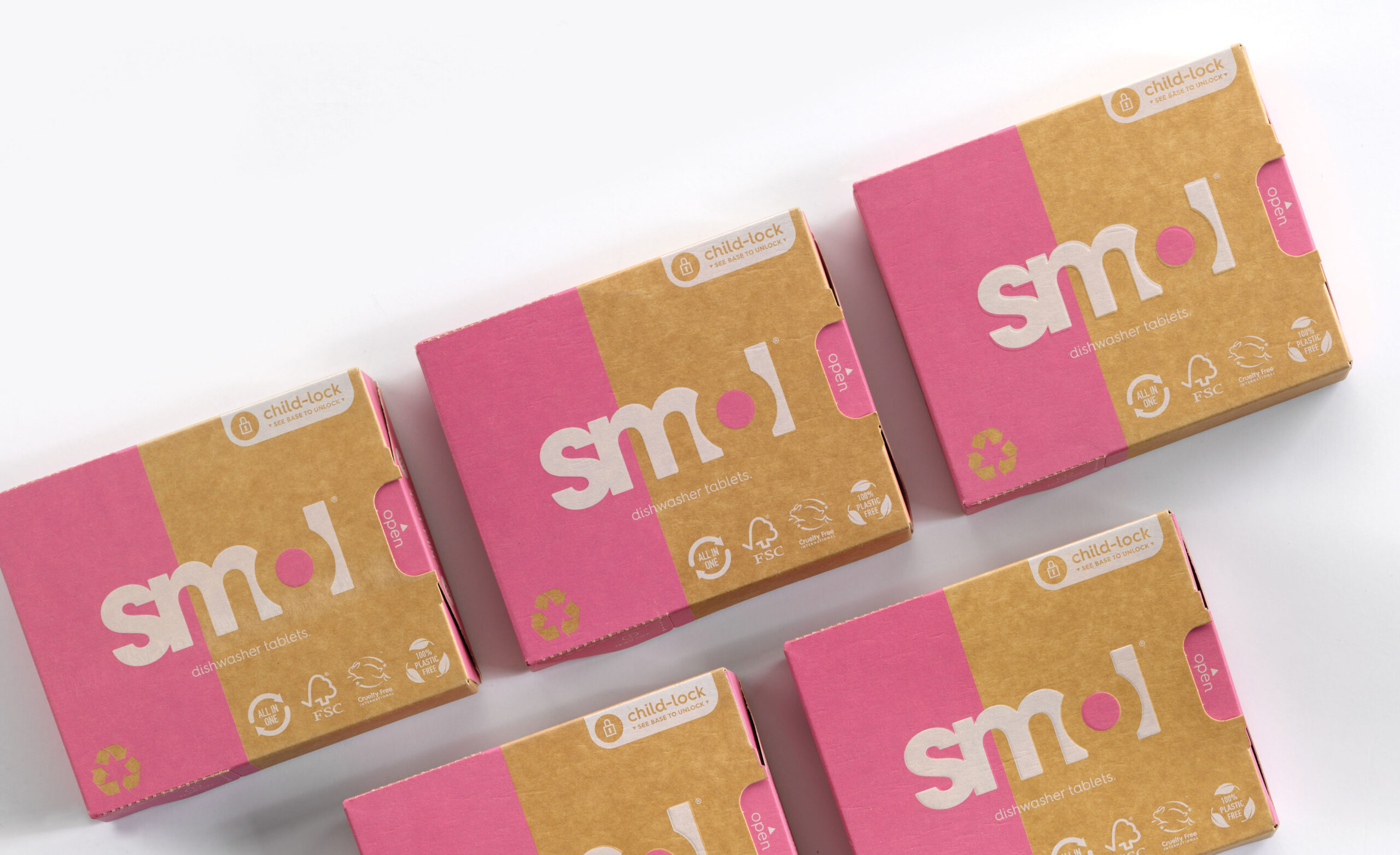
How to get a job in the design industry
By Ben Walker on 05 October 2018
Did you know that design is one of the most popular college and university courses in the UK? And that only around a quarter of those who graduate with a design qualification will actually land a job working as a professional designer? Competition is clearly fierce, and those odds aren’t fantastic.
But we’re not here to make you feel glum – we’re here to help, and by reading this blog post you’re already one step ahead of the competition *high five*.
We’ve picked the brains of two of our expert designers to find out how they got into the design industry, why studying was important to them, how they got their big break and what advice they’d give to recent graduates looking to secure a job in the creative industry. Soak in these pearls of wisdom from the whizz kids, Sarah Vance and Sarah Tucker, henceforth known simply as Tucker and Vance to prevent any Sarah-related confusion…
Decide if you really want to be a designer
The idea of being a designer can be quite different to the reality. For Tucker and Vance, the calling found them.
- Vance: I didn’t always know I wanted to be a designer, but I’d always been creative. In sixth year at school, I focused on art and design, and particularly the expressive side of art. But I kept wondering – where would that go as a career? That’s where the idea of pursuing design began. Design is part of everyone’s daily life, so it seemed like a more secure career path.
- Tucker: The thought of becoming a designer didn’t even cross my mind until I was studying a Foundation in Art & Design course at Edinburgh College. I was interested in magazine and album art, and one of my tutors suggested it as a potential area to explore.

Grab opportunities while you’re studying
One thing both of our designers emphasised was the importance of grabbing every opportunity to get real-world experience whilst studying.
- Vance: While studying Graphic Design at Edinburgh Napier I landed a placement with DK Books. It gave me an experience of design work in a real-life office environment and of working with other designers. It was fantastic to get an idea of how a design department is run day today.
- Tucker: Do as many placements as you can. It’s not always practical, especially if it’s unpaid – but if you can afford it it’s definitely worth it. Networking while you’re at college is important too. We got to team up with people already working in the industry and we had mentors so we got to know people quite well – contacts are so important! There are loads of agencies in Edinburgh, but it’s actually quite a small pool of people, so building those connections is essential.
- Vance: Yes, networking is a good thing to do – you never know who you might meet or what opportunities might arise. It’s good to hear about potential jobs but to also gain inspiration from other designers. An event I love to go to is the LWD (Ladies, Wine & Design) series in Edinburgh, which is a monthly event for women who work in creative industries, featuring talks, workshops and wine!
Your first job might not necessarily be your dream job
Remember, everyone’s got to start somewhere. When you first graduate you’ll probably dedicate a lot of time to applying for jobs. Both Sarahs started with placements and in-house roles before they moved on to agency work.
- Vance: After graduation, I went to Australia for a year and worked in a start-up marketing agency, which was fun, exciting and very hands on. I also did some freelance projects working with different clients, which helped me build my experience and portfolio.
Commit to looking for a job and treat it like a job itself, with a strong portfolio and CV. I didn’t find my ideal job straight away but, ultimately, it’s led me to where I want to be.
Be prepared to do internships and work placements that maybe aren’t your first choice. Say yes to the big and bold projects, as well as the small, everyday projects. You’ll learn from both types and it will really help to build your portfolio.
- Tucker: It took me a while to land my first design job, but my persistence paid off. I started off as an in-house designer, working with an existing brand and pitching in with non-design related work when necessary.
- Vance: I worked in-house for a while too in the design department at the University of Dundee. It was mostly print-based work, designing exhibitions, displays and stands. While it was good to learn about deadlines, budgets and sourcing quotes, I craved the opportunity to work in an agency where I could get the chance to work with different clients in different industries.
Agency life vs in-house
When looking for a job in design, your choices can be split, broadly speaking, into two categories: agency or in-house roles. But which is best?
- Tucker: Smaller agencies are way more hands-on, and you get to have some really interesting face to face meetings with clients.
- Vance: Yes, agencies are a great place to start for a graduate. You’ll be surrounded by other designers and creative people who’ve been in your shoes, and they can guide you and help you learn. At an agency, you’ll work with various clients on a huge range of projects, which helps you develop. Plus you can get extra support from management, so if you’re considering a job, ask who’ll be in your team.
Working as a designer is very different from studying design
- Tucker: Working as a designer is far more fast-paced than anything you do at college. When studying, you’ll often have around two weeks to do one project – that’s a total luxury! When you’re working you have to deal with multiple jobs at once, often with tight turnaround times.
- Vance: As a student, you have the freedom to be as creative as you want when completing your own projects. Working as a designer, however, your clients’ requirements need to be your top priority and you need to stick to their creative briefs.
You need talent AND a strong work ethic
For most successful professional designers, the combination of years of hard work plus natural creativity has proven to be the winning formula to help them establish their careers.
- Tucker: You’ve got to have talent, but also the passion. Skill without passion is boring work. Design is definitely something you can learn.
- Vance: Most people can learn how to use design software and teach themselves the skills, but if you don’t have a natural talent or creativity you probably won’t produce anything of value or longevity. You have to work hard to create something that works for someone’s business. Talent helps you create things that are interesting, special and new.
Everyone makes mistakes
We’re all human, and even a professional designer can learn from their mistakes.
- Tucker: When I worked for an art gallery as an intern, we created a brochure to showcase the artists. It wasn’t spell checked before it went to print and then it came back with one of the artist’s names spelt incorrectly. Luckily the gallery and the artist thought it was funny! But it taught me to triple check spelling on everything – or better yet, get someone else to check it for me.
- Vance: It’s always good to take some time to reflect on projects too, rather than quickly and simply moving on to the next. Look back and think about how you could have possibly improved and refined it. You’ll take these learnings with you to the next project.

How to stand out at an interview
If you’re lucky enough to land an interview for a design job, now all you need to do is nail it. Easy right? Hmmm…
- Vance: It can be daunting to compete with other graduates – everyone has a degree, a portfolio and has done the prep. Make sure you show a willingness to learn and be curious, be yourself and show your personality, and show that you will get on and fit in with the team.
- Tucker: Yes, be confident (or at least pretend you are!). Be the kind of person people want to work with, be chatty and leave an impression. I have a friend who takes a pack of biscuits to interviews – and it seems to work! It’s also good to prepare some questions to ask at an interview because it makes you look like you’ve done your research. Oh and arrive early, but not super early – 5-10 minutes is perfect.
Create a kick-ass portfolio
Ultimately, a potential employer is interested in seeing exactly what mad design skills you have to offer. And, of course, the best way to showcase your talent and ability is through your portfolio.
- Tucker: Make sure you have a variety of different genres and styles on show. You may have developed a certain design style at college, but you need to be able to show versatility. Think about the presentation too – design it and make it look nice. I print mine on nice paper and present it in an attractive folder.
- Vance: Only include projects that showcase your work and don’t include group projects, as it’s hard for a potential employer to know what part you had in it. Also, think quality over quantity – show a variety of projects, but don’t overdo it.
- Tucker: You need to be adding stuff to your portfolio all the time. I love a website called Briefbox where you can download practice briefs and then add the finished design to your portfolio. It keeps you active, plus you can be featured on social accounts and get useful feedback.
How to be a successful designer
What are the magical ingredients?
- Vance: Successful designers have creativity, a curious mind and keep up with design trends and software developments. Attention to detail is super important, as well as being patient with yourself, patient with your clients, and having a thick skin.
- Tucker: You need to be confident and have self-belief. You also have to know when to ask for help. Learn how to handle criticism – it’s not personal, so try not to be offended.
You’ve totally got this
If you’re looking around wondering how on earth you’re going to compete with all the other graduates, then please pay attention to these final wise words from the Sarahs.
Vance: You deserve to be here, you don’t need to compare yourself. When everyone is graduating and getting jobs, comparing yourself doesn’t help – you’ll find your way eventually. Remember that you can have anything if you work hard enough for it. Put in the hard work and the time and you’ll get to where you want to be.
Tucker: Be more confident and persistent. Oh and learn the software shortcuts – you’ll work way more efficiently!
Now go out there and knock ‘em dead…
Thank you
Success! We've received your message and will get back to you as soon as possible. We look forward to chatting to you.
“What has stood out the most about the design work that Firefly has produced for me is that the professionalism, quality and detail has been second to none.
The reliability of the Firefly team and the fact that they work efficiently to produce the highest quality content is the reason I will keep returning as a customer.”
Ross Brinson
Founder
Intrepidus Outdoors






